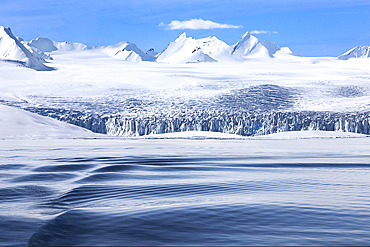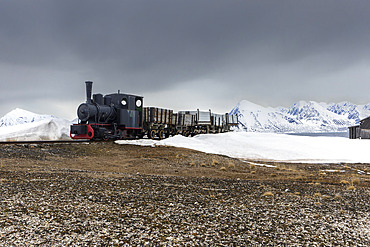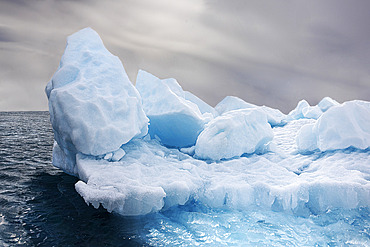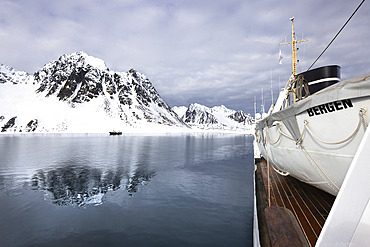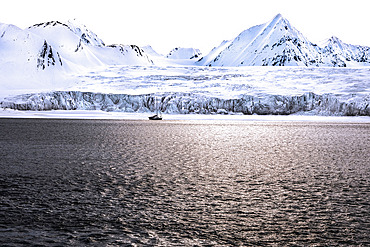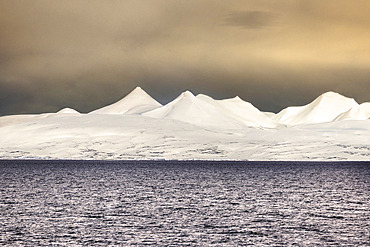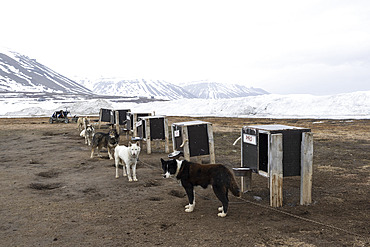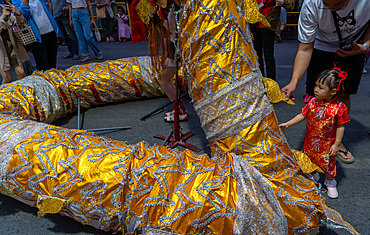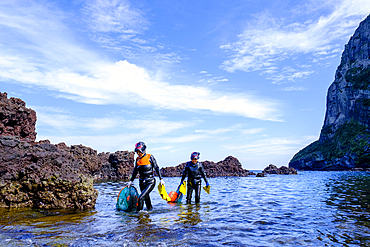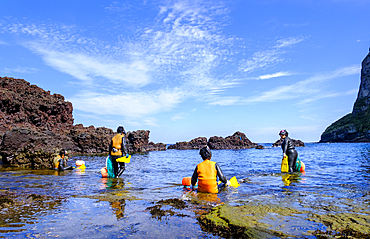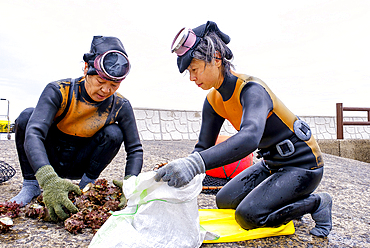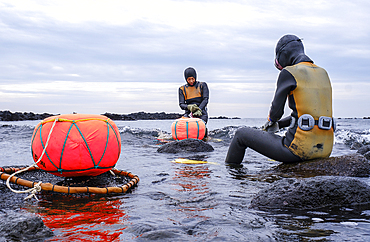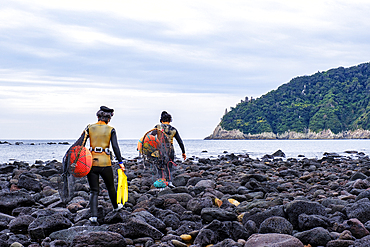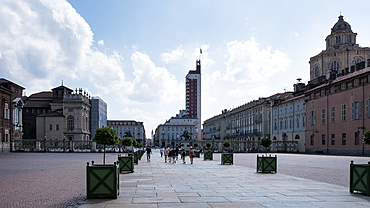Recent searches
Loading...
722-217 - Bhubaneswar, Odisha is nicknamed India?s ?City of Temples? in which around 350 are still standing, many dating back to well over one-thousand years. Shown here is an aspect of the 9th century Rameshwar Temple dedicated the Hindu deity Shiva.
1188-1105 - Songkram Thai Buddhist New Year parade, blessings and water battles celebrations in Chiang Mai, Thailand
1188-1104 - Songkram Thai Buddhist New Year parade, blessings and water battles celebrations in Chiang Mai, Thailand
1188-1103 - Songkram Thai Buddhist New Year parade, blessings and water battles celebrations in Chiang Mai, Thailand
1188-1102 - Songkram Thai Buddhist New Year parade, blessings and water battles celebrations in Chiang Mai, Thailand
722-205 - Bhubaneswar, Odisha is nicknamed India's City of Temples in which around 350 are still standing, many dating back to well over one-thousand years. Shown here is the 11th century Rajarani Temple dedicated the Hindu deity Shiva.
722-204 - Bhubaneswar, Odisha is nicknamed India's City of Temples in which around 350 are still standing, many dating back to well over one-thousand years. Shown here are aspects of the 9th century Mukteswara Temple dedicated the Hindu deity Shiva.
722-203 - Bhubaneswar, Odisha is nicknamed India's City of Temples in which around 350 are still standing, many dating back to well over one-thousand years. Shown here are aspects of the 9th century Mukteswara Temple dedicated the Hindu deity Shiva.
722-202 - Bhubaneswar, Odisha is nicknamed India's City of Temples in which around 350 are still standing, many dating back to well over one-thousand years. Shown here are aspects of the 9th century Mukteswara Temple dedicated the Hindu deity Shiva.
722-201 - Bhubaneswar, Odisha is nicknamed India's City of Temples in which around 350 are still standing, many dating back to well over one-thousand years. Shown here are aspects of the 9th century Mukteswara Temple dedicated the Hindu deity Shiva.
722-213 - Bhubaneswar, capital of the ancient, east Indian State of Odisha, previously Orissa. Here the hilltop Digambara Jain Temple which stands above the Udayagiri and Khandagiri complex of caves dating back to over 100 years BCE.
722-212 - Bhubaneswar, Odisha. Here we see examples of monks' cells cut into the hillside rock among the Udayagiri and Khandagiri caves dating back to over 100 years BCE sculptured into the hillside as religious retreats for Jain devotees.
722-210 - Bhubaneswar, Odisha. Here we see examples of monks' cells cut into the hillside rock among the Udayagiri and Khandagiri caves dating back to over 100 years BCE sculptured into the hillside as religious retreats for Jain devotees.
722-211 - Bhubaneswar, Odisha. Here we see examples of monks' cells cut into the hillside rock among the Udayagiri and Khandagiri caves dating back to over 100 years BCE sculptured into the hillside as religious retreats for Jain devotees.
722-209 - Bhubaneswar, Odisha. Here we see examples of monks' cells cut into the hillside rock among the Udayagiri and Khandagiri caves dating back to over 100 years BCE sculptured into the hillside as religious retreats for Jain devotees.
722-208 - Bhubaneswar, Odisha. Here we see examples of monks' cells cut into the hillside rock among the Udayagiri and Khandagiri caves dating back to over 100 years BCE sculptured into the hillside as religious retreats for Jain devotees.
722-207 - Bhubaneswar, Odisha. Here we see the garden at the entrance to the Udayagiri and Khandagiri caves dating back to over 100 years BCE sculptured into the hillside as religious retreats for Jain devotees.
722-206 - Bhubaneswar, Odisha. Here we see a small sanctuary near the entrance to the site of the of the Udayagiri and Khandagiri caves dating back to over 100 years BCE sculptured into the hillside as religious retreats for Jain devotees.
722-198 - Bhubaneswar, Odisha is nicknamed India's 'City of Temples' in which around 350 are still standing, many dating back to well over one-thousand years. Shown here is an aspect of the 11th century Lingaraja Temple complex dedicated the Hindu deity Shiva.
743-85 - Lion cub, Panthera leo, approximately two to three months old, Kruger National Park, South Africa, Africa
1384-85 - Interior of Mercado Municipal Lucas de Galvez market, Merida, Yucatan State, Mexico
1384-80 - Stained glass canopy entrance to Gran Hotel, Merida, Yucatan State, Mexico built c 1900
1382-85 - statue of Roland,House of the Blackheads and Schwabe House,City Hall Square,Ratslaukums,Riga,Latvia,Baltic region, Northern Europe
1382-80 - bungee jumping from the cable car over the Gauja River,around Sigulda,Gauja National park,Vidzeme Region,Latvia,Baltic region,Northern Europe
1383-98 - The Kulamba Traditional Ceremony of the Chewa people takes place every year on the last Saturday in August near Katete. The Chewa who also live in Mozambique and Malawi come to pay homage to their Chief Kalonga Gaia Uni.
1383-96 - The Kulamba Traditional Ceremony of the Chewa people takes place every year on the last Saturday in August near Katete. The Chewa who also live in Mozambique and Malawi come to pay homage to their Chief Kalonga Gaia Uni.
1383-97 - The Kulamba Traditional Ceremony of the Chewa people takes place every year on the last Saturday in August near Katete. The Chewa who also live in Mozambique and Malawi come to pay homage to their Chief Kalonga Gaia Uni.
1383-95 - The Kulamba Traditional Ceremony of the Chewa people takes place every year on the last Saturday in August near Katete. The Chewa who also live in Mozambique and Malawi come to pay homage to their Chief Kalonga Gaia Uni.
1383-94 - The Kulamba Traditional Ceremony of the Chewa people takes place every year on the last Saturday in August near Katete. The Chewa who also live in Mozambique and Malawi come to pay homage to their Chief Kalonga Gaia Uni.
1383-92 - The Kulamba Traditional Ceremony of the Chewa people takes place every year on the last Saturday in August near Katete. The Chewa who also live in Mozambique and Malawi come to pay homage to their Chief Kalonga Gaia Uni.
1383-93 - The Kulamba Traditional Ceremony of the Chewa people takes place every year on the last Saturday in August near Katete. The Chewa who also live in Mozambique and Malawi come to pay homage to their Chief Kalonga Gaia Uni.
1383-91 - The Kulamba Traditional Ceremony of the Chewa people takes place every year on the last Saturday in August near Katete. The Chewa who also live in Mozambique and Malawi come to pay homage to their Chief Kalonga Gaia Uni.
1383-90 - The Kulamba Traditional Ceremony of the Chewa people takes place every year on the last Saturday in August near Katete. The Chewa who also live in Mozambique and Malawi come to pay homage to their Chief Kalonga Gaia Uni.
1383-89 - The Kulamba Traditional Ceremony of the Chewa people takes place every year on the last Saturday in August near Katete. The Chewa who also live in Mozambique and Malawi come to pay homage to their Chief Kalonga Gaia Uni.
1383-88 - The Kulamba Traditional Ceremony of the Chewa people takes place every year on the last Saturday in August near Katete. The Chewa who also live in Mozambique and Malawi come to pay homage to their Chief Kalonga Gaia Uni.
1383-87 - The Kulamba Traditional Ceremony of the Chewa people takes place every year on the last Saturday in August near Katete. The Chewa who also live in Mozambique and Malawi come to pay homage to their Chief Kalonga Gaia Uni.
1383-86 - The Kulamba Traditional Ceremony of the Chewa people takes place every year on the last Saturday in August near Katete. The Chewa who also live in Mozambique and Malawi come to pay homage to their Chief Kalonga Gaia Uni.
1383-85 - The Kulamba Traditional Ceremony of the Chewa people takes place every year on the last Saturday in August near Katete. The Chewa who also live in Mozambique and Malawi come to pay homage to their Chief Kalonga Gaia Uni.
1383-83 - The Kulamba Traditional Ceremony of the Chewa people takes place every year on the last Saturday in August near Katete. The Chewa who also live in Mozambique and Malawi come to pay homage to their Chief Kalonga Gaia Uni.
1383-84 - The Kulamba Traditional Ceremony of the Chewa people takes place every year on the last Saturday in August near Katete. The Chewa who also live in Mozambique and Malawi come to pay homage to their Chief Kalonga Gaia Uni.
1383-82 - The Kulamba Traditional Ceremony of the Chewa people takes place every year on the last Saturday in August near Katete. The Chewa who also live in Mozambique and Malawi come to pay homage to their Chief Kalonga Gaia Uni.
1383-81 - The Kulamba Traditional Ceremony of the Chewa people takes place every year on the last Saturday in August near Katete. The Chewa who also live in Mozambique and Malawi come to pay homage to their Chief Kalonga Gaia Uni.
1383-80 - The Kulamba Traditional Ceremony of the Chewa people takes place every year on the last Saturday in August near Katete. The Chewa who also live in Mozambique and Malawi come to pay homage to their Chief Kalonga Gaia Uni.
1383-79 - The Kulamba Traditional Ceremony of the Chewa people takes place every year on the last Saturday in August near Katete. The Chewa who also live in Mozambique and Malawi come to pay homage to their Chief Kalonga Gaia Uni.
1383-77 - The Kulamba Traditional Ceremony of the Chewa people takes place every year on the last Saturday in August near Katete. The Chewa who also live in Mozambique and Malawi come to pay homage to their Chief Kalonga Gaia Uni.
1383-78 - The Kulamba Traditional Ceremony of the Chewa people takes place every year on the last Saturday in August near Katete. The Chewa who also live in Mozambique and Malawi come to pay homage to their Chief Kalonga Gaia Uni.
1383-76 - The Kulamba Traditional Ceremony of the Chewa people takes place every year on the last Saturday in August near Katete. The Chewa who also live in Mozambique and Malawi come to pay homage to their Chief Kalonga Gaia Uni.
1383-75 - The Kulamba Traditional Ceremony of the Chewa people takes place every year on the last Saturday in August near Katete. The Chewa who also live in Mozambique and Malawi come to pay homage to their Chief Kalonga Gaia Uni.
1383-74 - The Kulamba Traditional Ceremony of the Chewa people takes place every year on the last Saturday in August near Katete. The Chewa who also live in Mozambique and Malawi come to pay homage to their Chief Kalonga Gaia Uni.
1383-73 - The Kulamba Traditional Ceremony of the Chewa people takes place every year on the last Saturday in August near Katete. The Chewa who also live in Mozambique and Malawi come to pay homage to their Chief Kalonga Gaia Uni.
1383-72 - The Kulamba Traditional Ceremony of the Chewa people takes place every year on the last Saturday in August near Katete. The Chewa who also live in Mozambique and Malawi come to pay homage to their Chief Kalonga Gaia Uni.
1383-71 - The Kulamba Traditional Ceremony of the Chewa people takes place every year on the last Saturday in August near Katete. The Chewa who also live in Mozambique and Malawi come to pay homage to their Chief Kalonga Gaia Uni.
1383-70 - The Kulamba Traditional Ceremony of the Chewa people takes place every year on the last Saturday in August near Katete. The Chewa who also live in Mozambique and Malawi come to pay homage to their Chief Kalonga Gaia Uni.
1383-69 - The Kulamba Traditional Ceremony of the Chewa people takes place every year on the last Saturday in August near Katete. The Chewa who also live in Mozambique and Malawi come to pay homage to their Chief Kalonga Gaia Uni.
1383-67 - The Kulamba Traditional Ceremony of the Chewa people takes place every year on the last Saturday in August near Katete. The Chewa who also live in Mozambique and Malawi come to pay homage to their Chief Kalonga Gaia Uni.
1383-66 - The Kulamba Traditional Ceremony of the Chewa people takes place every year on the last Saturday in August near Katete. The Chewa who also live in Mozambique and Malawi come to pay homage to their Chief Kalonga Gaia Uni.
1383-65 - The Kulamba Traditional Ceremony of the Chewa people takes place every year on the last Saturday in August near Katete. The Chewa who also live in Mozambique and Malawi come to pay homage to their Chief Kalonga Gaia Uni.
1383-63 - The Kulamba Traditional Ceremony of the Chewa people takes place every year on the last Saturday in August near Katete. The Chewa who also live in Mozambique and Malawi come to pay homage to their Chief Kalonga Gaia Uni.
1383-64 - The Kulamba Traditional Ceremony of the Chewa people takes place every year on the last Saturday in August near Katete. The Chewa who also live in Mozambique and Malawi come to pay homage to their Chief Kalonga Gaia Uni.
1383-62 - The Kulamba Traditional Ceremony of the Chewa people takes place every year on the last Saturday in August near Katete. The Chewa who also live in Mozambique and Malawi come to pay homage to their Chief Kalonga Gaia Uni.
1383-61 - The Kulamba Traditional Ceremony of the Chewa people takes place every year on the last Saturday in August near Katete. The Chewa who also live in Mozambique and Malawi come to pay homage to their Chief Kalonga Gaia Uni.
1383-60 - The Kulamba Traditional Ceremony of the Chewa people takes place every year on the last Saturday in August near Katete. The Chewa who also live in Mozambique and Malawi come to pay homage to their Chief Kalonga Gaia Uni.
1383-59 - The Kulamba Traditional Ceremony of the Chewa people takes place every year on the last Saturday in August near Katete. The Chewa who also live in Mozambique and Malawi come to pay homage to their Chief Kalonga Gaia Uni.
1383-58 - The Kulamba Traditional Ceremony of the Chewa people takes place every year on the last Saturday in August near Katete. The Chewa who also live in Mozambique and Malawi come to pay homage to their Chief Kalonga Gaia Uni.
1383-57 - The Kulamba Traditional Ceremony of the Chewa people takes place every year on the last Saturday in August near Katete. The Chewa who also live in Mozambique and Malawi come to pay homage to their Chief Kalonga Gaia Uni.
1383-56 - The Kulamba Traditional Ceremony of the Chewa people takes place every year on the last Saturday in August near Katete. The Chewa who also live in Mozambique and Malawi come to pay homage to their Chief Kalonga Gaia Uni.
1383-55 - The Kulamba Traditional Ceremony of the Chewa people takes place every year on the last Saturday in August near Katete. The Chewa who also live in Mozambique and Malawi come to pay homage to their Chief Kalonga Gaia Uni.
1383-54 - The Kulamba Traditional Ceremony of the Chewa people takes place every year on the last Saturday in August near Katete. The Chewa who also live in Mozambique and Malawi come to pay homage to their Chief Kalonga Gaia Uni.
1383-53 - The Kulamba Traditional Ceremony of the Chewa people takes place every year on the last Saturday in August near Katete. The Chewa who also live in Mozambique and Malawi come to pay homage to their Chief Kalonga Gaia Uni.
1358-386 - The Wilmington Yew. A yew tree in the churchyard of St Mary and St Peter, Wilmington, East Sussex which is believed to be at least 1,600 years old.
860-292474 - Giant Seychelles tortoise (Aldabrachelys gigantea), Turtle island, Prison island, Zanzibar. This island was used as a prison for slaves, and four giant Seychelles tortoises were introduced. Today, they are protected from poachers, and the oldest are between 170 and 200 years old.
860-292443 - Tek rebreather diver at a depth of 70 meters with a DPV specially equipped with 60,000 lumen lighting and 12 Gopro to carry out a 3D survey of a karstic cave submerged for over 14,000 years, Passe Bateau Sud, Mayotte Lagoon
860-292394 - Landscape of Svalbard in Norway, also known as Spitsbergen. This territory stretches from latitude 75 to 80 degrees to the pack ice a few hundred kilometers from the North Pole. Melting ice, early global warming. Front of a glacier fracturing at the edge of a fjord.
860-292393 - Landscape of Svalbard in Norway, also known as Spitsbergen. This territory stretches from latitude 75 to 80 degrees to the pack ice a few hundred kilometers from the North Pole. Melting ice, early global warming. Baie de la Madeleine here, a coastal landscape rising to 80 degrees latitude, where blocks of ice and small icebergs detached from glaciers drift on the water. Old steam train in front of Ny-Alesund weather station
860-292392 - Landscape of Svalbard in Norway, also known as Spitsbergen. This territory stretches from latitude 75 to 80 degrees to the pack ice a few hundred kilometers from the North Pole. Melting ice, premature global warming. Exploration boat in Baie de la Madeleine.
860-292391 - Landscape of Svalbard in Norway, also known as Spitsbergen. This territory stretches from latitude 75 to 80 degrees to the pack ice a few hundred kilometers from the North Pole. Melting ice, early global warming. Coastal scenery as you climb towards latitude 80 degrees. Trapper's hut, professional hunter's hut
860-292390 - Landscape of Svalbard in Norway, also known as Spitsbergen. This territory stretches from latitude 75 to 80 degrees to the pack ice a few hundred kilometers from the North Pole. melting ice, early global warming. Baie de la Madeleine, a coastal landscape rising towards latitude 80 degrees, where blocks of ice and small icebergs detached from glaciers drift on the water.
860-292388 - Landscape of Svalbard in Norway, also known as Spitsbergen. This territory stretches from latitude 75 to 80 degrees to the pack ice a few hundred kilometers from the North Pole. Melting ice, premature global warming. Exploration boat in Madeleine Bay. Young explorer on deck.
860-292389 - Landscape of Svalbard in Norway, also known as Spitsbergen. This territory stretches from latitude 75 to 80 degrees to the pack ice a few hundred kilometers from the North Pole. Melting ice, premature global warming. Exploration boat in Magdalen Bay. Explorer sailboat.
860-292387 - Landscape of Svalbard in Norway, also known as Spitsbergen. This territory stretches from latitude 75 to 80 degrees to the pack ice a few hundred kilometers from the North Pole. Melting ice, early global warming. Front of a glacier fracturing at the edge of a fjord. Explorers' sailboat at the ice edge
860-292386 - Landscape of Svalbard in Norway, also known as Spitsbergen. This territory stretches from latitude 75 to 80 degrees to the pack ice a few hundred kilometers from the North Pole. Melting ice, early global warming.
860-292340 - Dogsledding. Landscape of Svalbard in Norway, also known as Spitsbergen. This territory stretches from latitude 75 to 80 degrees to the pack ice a few hundred kilometers from the North Pole.
860-292339 - Landscape of Svalbard in Norway, also known as Spitsbergen. This territory stretches from latitude 75 to 80 degrees to the pack ice a few hundred kilometers from the North Pole.
860-292338 - Aerial view over the snow-covered peaks of Svalbard. pointed peak known as spitzberg. latitude from 75 to 80 degrees, down to the pack ice near the north pole.
860-292276 - The Petrified Forest National Park is home to thousands of fossilized tree trunks approximately 200 million years old (Triassic period). Arizona. USA.
1188-1039 - Chinese New Year celebrations in Chinatown, Chiang Mai, Thailand
1188-1038 - Chinese New Year celebrations in Chinatown, Chiang Mai, Thailand
1188-1037 - Chinese New Year celebrations in Chinatown, Chiang Mai, Thailand
1188-1036 - Chinese New Year celebrations in Chinatown, Chiang Mai, Thailand
1188-1035 - Chinese New Year celebrations in Chinatown, Chiang Mai, Thailand
1376-80 - Sunset across the Irish Sea and Furness Peninsula, from Sandy Gap, Walney Island, Cumbrian Coast, Cumbria, England, United Kingdom, Europe
1111-267 - Haenyeo diving for conch, octopus, seaweed, and other seafood. Famous for diving into their eighties for being able to hold their breath for up to two minutes, the Haenyeo have harvested Jeju's oceans for hundreds of years.
1111-266 - Haenyeo diving for conch, octopus, seaweed, and other seafood. Famous for diving into their eighties for being able to hold their breath for up to two minutes, the Haenyeo have harvested Jeju's oceans for hundreds of years.
1111-265 - Haenyeo diving for conch, octopus, seaweed, and other seafood. Famous for diving into their eighties for being able to hold their breath for up to two minutes, the Haenyeo have harvested Jeju's oceans for hundreds of years.
1111-254 - Haenyeo women sort their catch. They dive for conch, octopus, seaweed, and other seafood. Famous for diving into their eighties for being able to hold their breath for up to two minutes, the Haenyeo have harvested Jeju's oceans for hundreds of years.
1111-252 - Haenyeo diving for conch, octopus, seaweed, and other seafood. Famous for diving into their eighties for being able to hold their breath for up to two minutes, the Haenyeo have harvested Jeju's oceans for hundreds of years.
1111-251 - Haenyeo diving for conch, octopus, seaweed, and other seafood. Famous for diving into their eighties for being able to hold their breath for up to two minutes, the Haenyeo have harvested Jeju's oceans for hundreds of years.
1373-85 - View of the monument to Emanuele Filiberto Duke of D'Aosta located in Piazza Castello, a prominent city square housing several landmarks, museums, theaters and cafes, Turin, Piedmont, Italy, Europe
1373-80 - View towards Via Roma, with the Torre Littoria in the background, from Piazza Castello, a prominent city square in the historic center of the city of Turin, Piedmont, Italy, Europe
1235-85 - Salt pans in Marsaskala, Malta, Mediterranean, Europe








































































